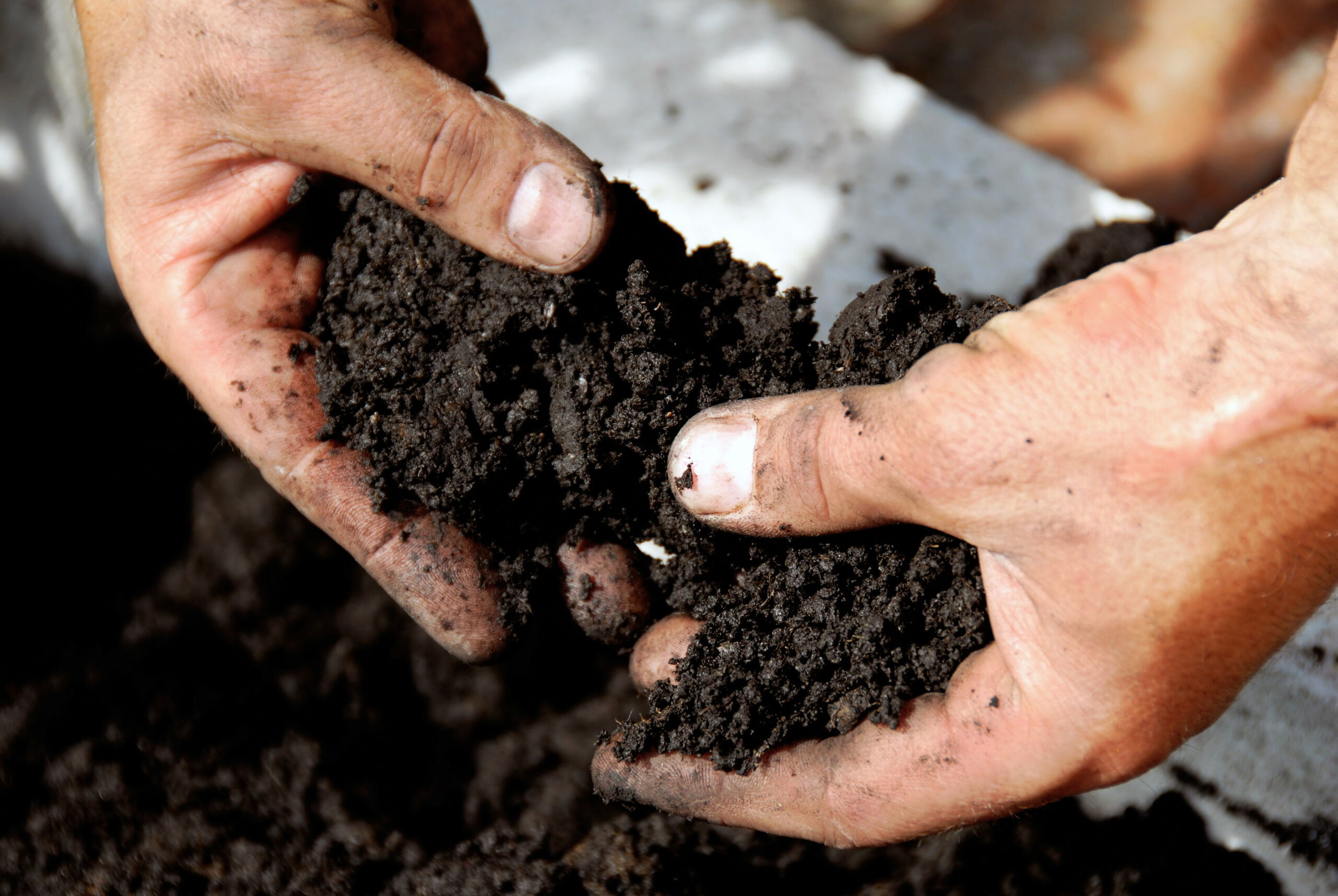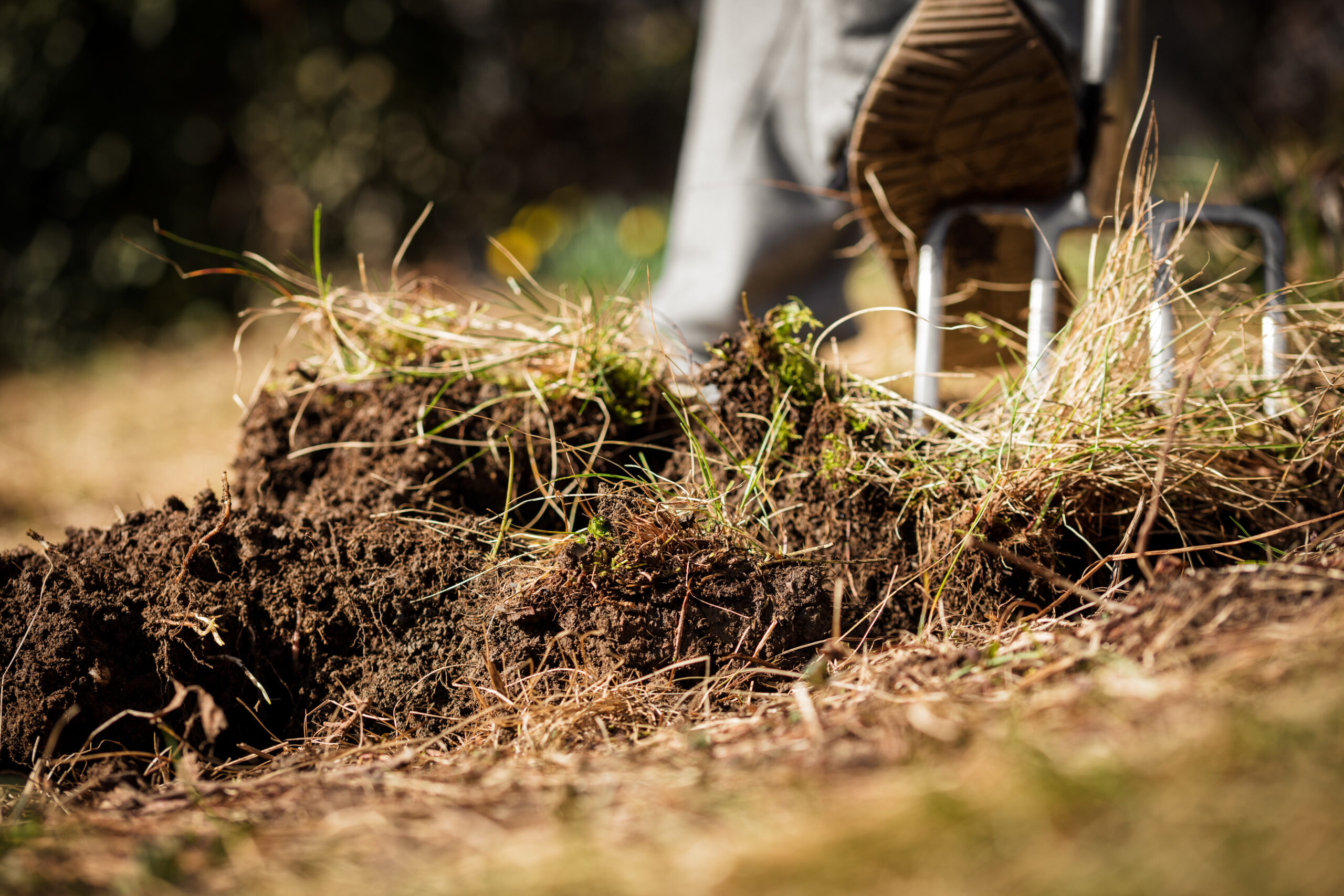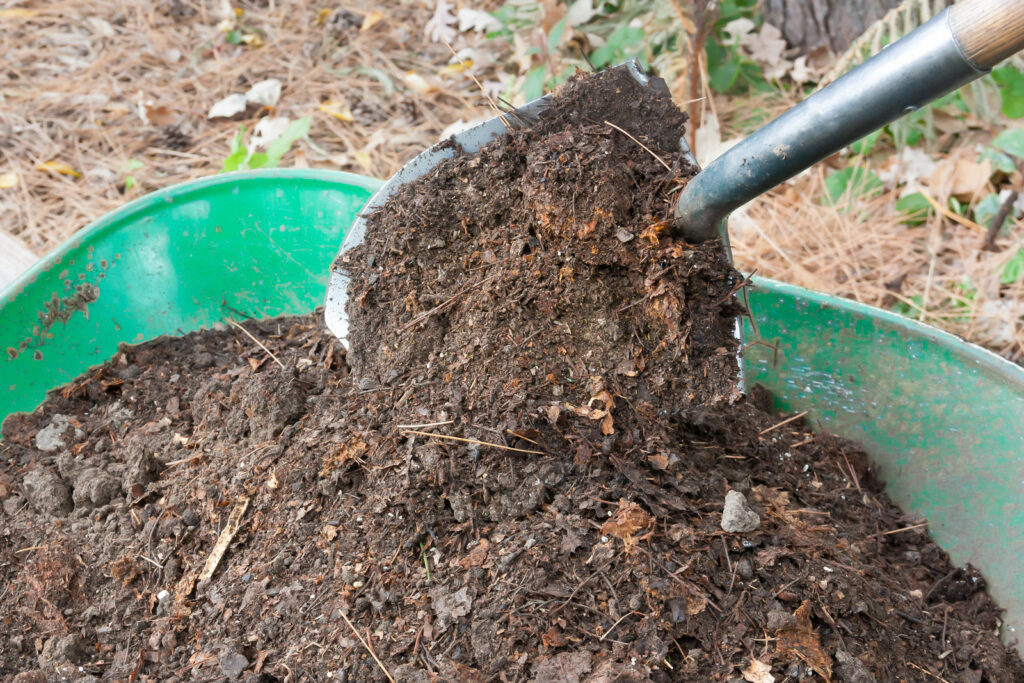Soil is the surface layer of the earth that supports plant life.
Soil is the composite result of:
- Disintegration and decomposition of all kinds of rocks
- The effects of climate and other physical conditions
- The life, death, and decay of animals and plants
As these conditions vary, so does the composition, character, color, and depth of soil. Soil varies around the world; soil even varies in the confines of a small garden.
Rock in soil
Types of soil are chiefly determined by the composition of the rock in a location. Here are some examples:
- When limestone rock disintegrates, it forms clay soil that is commonly alkaline. Clay soil is so fine-grained that particles “run together” making digging and drainage difficult. When clay soil is lightened with organic matter, it becomes retentive of moisture and plant nutrients.
- When granite or sandstone soil disintegrates, they form sandy soil which unless amended will allow rapid passage of water and with it dissolved plant nutrients. Soils formed from sandstone rocks contain little or no alkali and hence are usually somewhat acid.
Soils vary not only according to their basic rock or mineral composition but also according to the size of the mineral particles—fine or coarse, and also the proportion of decaying animal and vegetable matter they contain. Decomposed animal and vegetable matter is called “humus.”
Organic matter in soil
Humus—the decayed animal and vegetable matter in soil–varies widely in the amount in different soils. A peat or muck soil may be nearly all humus; a clay soil contains practically none; loam is said to have just the right amount of humus.
Humus is found nearly exclusively in the upper layer of cultivated soil and in nature in the zone in which plant roots live and die. Humus is decaying or decayed organic matter—it is constantly breaking down; cultivation in the garden hastens the break down of humus.

Grades of soil and types of soil
From the standpoint of a soil specialist, there are seven grades of soil based on the size of the mineral particles in the soil. The seven grades are:
- Fine gravel—diameter 2 to 2 millimeter
- Coarse sand—diameter 1 to ½ mm.
- Medium sand—diameter ½ to ¼ mm.
- Fine sand— ¼ to 1/10 mm.
- Very fine sand—1/10 to 1/20 mm.
- Silt—1/20 to 1/200 mm.
- Clay—less than 1/200 mm.
Based on the grades of soil, the types of soil are defined at:
- Sand—contains less than 1/5 silt or clay.
- Sandy loam—contains from 1/5 to ½ silt and clay bur not more than 20 percent clay.
- Silty loam—more than 50 percent silt and clay with less than 1/5 clay and more than ½ silt.
- Clay loam—more than ½ clay and silt with less than ½ silt and 20 to 30 percent clay.
- Clay—more than 50 percent silt and clay combined and more than 30 percent clay.
- Peat—65 percent or more of organic matter.
- Muck—25 to 65 percent well-decomposed organic matter with much clay, silt, or sand.
Soils of glacial origin are of mixed composition because glaciers move across various kinds of rock and the soil is collected. Soil that is built up by the action of water—usually rivers–are also collected and mixed and the same is true of soil formed along sea and lake coasts. These soils are sometimes called transported as opposed to a soil that forms and remains where the “bedrocks” are located which are called “sedimentary.”
Soil color
The color of soils is determined for the most part by the particles of rock and humus in the soil. A good amount of iron compounds in the soil will produce a soil color that is yellows, reds, blues, and in some cases gray. A good amount of humus in the soil will produce brown to black shades.
Soil depth
Soil depth varies from place to place. It can be thin or very thick. Gardeners divide the soil into two parts: (1) the upper surface of topsoil which generally, but not always, dark and rich in plant nutrients and especially in humus, and (2) the lower or subsoil. Most cultivated plants confine their roots mainly to the topsoil, but some plants such as trees penetrate the subsoil—field corn roots can grow to 5 feet 1.5m) deep, alfalfa roots can grow to 10 or more feet deep.

Soil fertility
Soil fertility—the capacity of a soil to grow plants—can be roughly determined by simply noticing the plants that grow in the soil. Where natural vegetation is lush, the soil quality is almost sure to be good; where plants grow sparse and scrawny, the soil quality fertility is poor. Superficial observation can be of help when considering where to plant a garden.
Improving the soil
No matter how poor soil is, it can almost always be improved. That said, the poorer the soil, the more costly it will be to improve—or replace.
Poorly drained soil and soil that is sticky and clay can be improved with the addition of sand and humus in the form of aged manure, green manure, compost, cover crops; these must be turned into the soil and a top dressing of lime and wood ashes will help. Soil that is sandy can also be improved with the addition of humus; this will give the soil more body; if a sandy soil is also lacking in nutrients then fertilizers can also be added.
When starting a new garden and establishing planting beds, the gardener will first want to remove undesirable materials such as stumps, roots, stones, and, when moving into a new house, the builder’s rubbish.
The soil should be turned before planting—at least 4 inches but 12 inches (10-30cm) or more for a first turning can tell you what kind of soil you have. Turning and raking will loosen the soil that plant roots must penetrate. This will also increase the porosity of the soil which is its ability to absorb and retain moisture and the aeration of the soil, its ability to admit air which is necessary for root development along with water and plant nutrients.
Turning the soil before planting will expose the hardpan if it exists. Hardpan is a layer of impermeable soil just below the topsoil. Hardpan can be a natural condition, or it can be formed by soil that is worked with it is wet. Think of hardpan as a floor that prevents the downward passage of water after a rain. Hardpan can be broken up by a pick-ax or deep digging.

Adding humus to the soil
Humus is the organic, non-mineral material that makes up good, fertile, productive soil. It consists of the more or less decomposed remains of vegetable and animal matter—that is plant themselves, dead animals, from microscopic organisms to any other kind of animal, and manure.
Humus may accumulate in soil naturally as leafmold does in an undisturbed forest, as dead grasses and weeds in a meadow, or as peat formed by the dying of water plants in pods and bogs.
Humus can also be added to the soil by the gardener in the form of manure, peat moss, compost, green manure crops—all turned under to rot. One of the gardener’s most important and never-ending tasks is to keep his soil supplied with humus. They can work in well-rotted manure; they can save every scrap of vegetable refuse and compost it as long as it is not diseased; they can sow vacant garden space with a quick-growing cover crop that can later be dug under as green manure.
When to work the soil
The best time to work or dig the soil is when the soil is just moist enough to turn and crumble nicely; don’t work the soil when it is wet that can turn soil into dry clods when the soil dries.
To judge if the soil is too wet to work, squeeze a handful of soil in your fist then open your hand; if the soil forms a sticky, wet ball, it is too wet; if it cracks or crumbles it is dry enough to work; is the soil run through your hands, it is too dry and needs to be wetted.
Also of interest:















